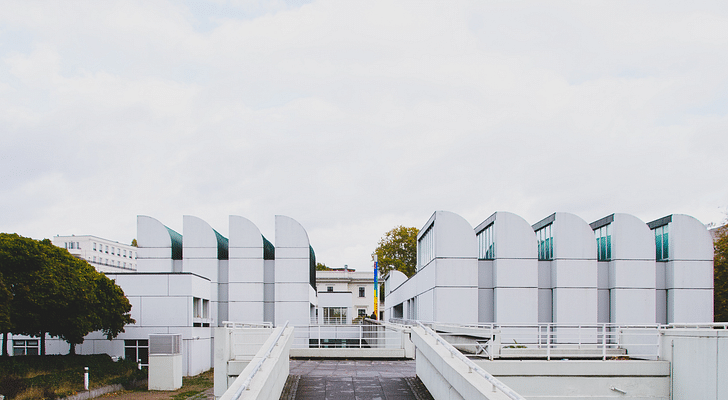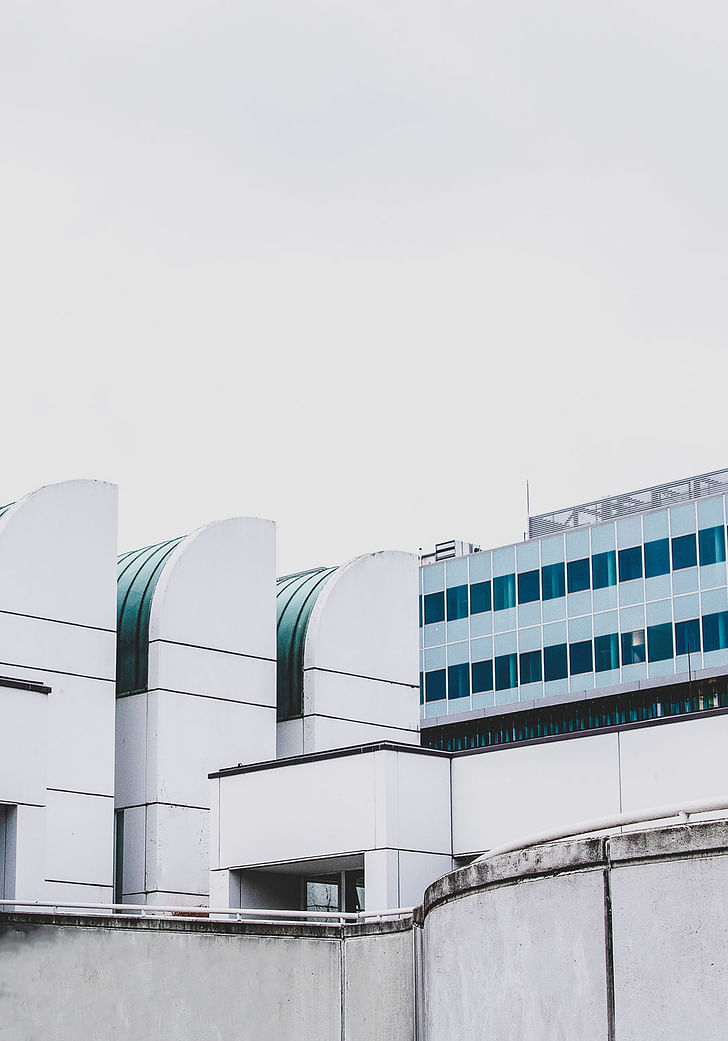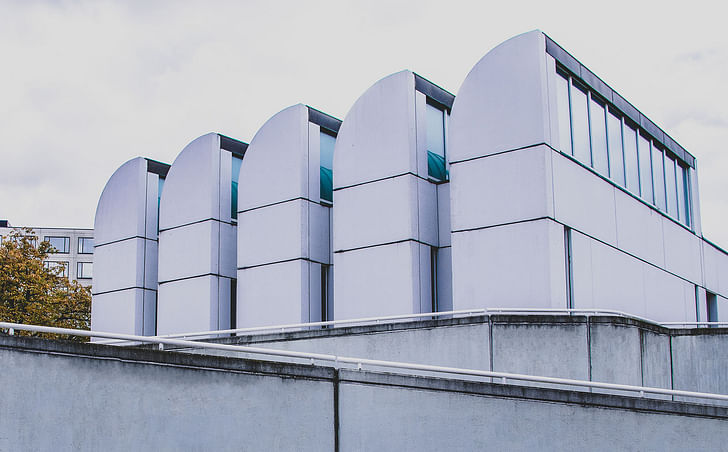

In our series Iconic Buildings, we speak to people who live or work in buildings of architectural significance. Is their exposure to an architectural wonder on a daily basis a source of inspiration or simply part of the backdrop?
In this feature we spoke to the Director of the Bauhaus-Archiv Annemarie Jaeggi. 2019 marks the centenary of the foundation and will be celebrated with a "100 years of Bauhaus" festival, an opportunity to reflect on the significant historical legacy of the Bauhaus. Annemarie and the team are currently located on a temporary site while the Bauhaus-Archiv is being renovated and extended, with the addition of a new building to the site. She takes us through her role, what the building means to her, and what the next 100 years hold.
What is your role at the Bauhaus-Archiv?
I am the Director.
How long have you worked at the Bauhaus-Archiv?
15 years
Did the building influence your decision when accepting the job? Did you aspire to work in such an iconic building?
I was connected to the Bauhaus-Archiv before, as previously I was the Head of Southwest-German Archive for Architecture and Civil Engineering. During that time I also curated exhibitions about Adolf Meyer and the Fagus Factory at the Bauhaus-Archiv.

The architecture of the building is, of course, iconic but the ideas and attitudes it represents are perhaps more iconic, how do these ideas resonate in you and your role as Director?
The Bauhaus-Archiv designed by Walter Gropius is one of the most important post-war modernist buildings in Berlin. Even after so many years, I still enter the building with a strong sense of pleasure – in the building’s careful details, the structure and combination of the materials used, the pleasing proportions and also the "democratic" equal treatment given to all of the office rooms, with no distinctions made between the ranks and duties of the staff members. The architecture and charisma of the building somehow also reflects my personality and leadership style.
What do you like most about the architectural design of the building?
Besides the striking shed roofs, the well-proportioned arrangement of its volumes, it is the admittedly unconventional, but elegant, pedestrian access route via a curving bridge ramp, I like the most.
Do you have a favourite lunch spot or corner for contemplation?
When the museum was opened, I used to sit inside the bauhaus-café very often. I liked it to be surrounded by the visitors.
What time of year do you most enjoy the Bauhaus-Archiv?
I like it all seasons.

How does the building itself affect your job?
Well the institution is not only famous because it holds the world’s biggest Bauhaus collection, but also because of the unique architecture of the building. It is part of our identity and therefore it plays a big role in my job.
Is there anything you don’t like about the building?
I think it is the traffic situation. It is located on very busy streets with many cars.
If you left your job what would you miss most about the Bauhaus-Archiv?
I would really miss everything.


Currently, the Archive is undergoing necessary renovations and you are at a temporary building on Knesebeckstraße. The Berlin-based, Staab architects, won the closed competition to design a new space on the site, due to be completed in the coming years, what do you plan to archive with this new space? What does the future hold for the Bauhaus?
The concept for the new Bauhaus-Archiv / Museum für Gestaltung envisages a spatial division corresponding to the principal functions involved. The Bauhaus-Archiv, with its reading room and library, events rooms and adjoining viewing depository, as well as the staff offices, will remain in Walter Gropius’s building. By contrast, the Museum für Gestaltung with its foyer and visitor services, as well as all of the exhibition spaces, will be located in the new building. With the opening of the windows and the removal of the inserted walls, we will once again be able to reveal the quality of the building and do justice to the promenade architectural. Particularly important to us is the fact that the new museum should become an important component of the city’s public life, as a specific and unique location. We are looking forward to the new era.

What do you think is the legacy of the Bauhaus-Archiv?
The Bauhaus-Archiv is now an internationally recognized museum. Its reputation has been achieved not only through numerous guest exhibitions but also those held under its own roof. In addition to historical topics associated with the Bauhaus, the Bauhaus-Archiv / Museum für Gestaltung is also increasingly turning its attention to current issues in contemporary architecture and design. Until the closure, we had more than 100,000 visitors every year from all over the world. That shows that we are on our right way and that Bauhaus as an idea is still alive.
What do you hope will be your legacy at the Bauhaus-Archiv?
When I started this job, my goal was to renovate and reopen the museum. I will succeed now - after some years of hard work with my team - and I look forward to it.

Ellen Hancock studied Fine Art and History of Art at The University of Leeds and Sculpture at Mimar Sinan Fine Arts University in Istanbul.Now based in London she has a keen interest in travel, literature, interactive art and social architecture.
No Comments
Block this user
Are you sure you want to block this user and hide all related comments throughout the site?
Archinect
This is your first comment on Archinect. Your comment will be visible once approved.